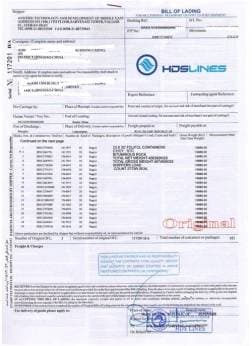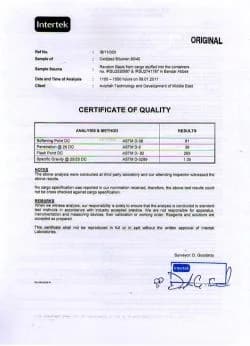Technical Urea – High-Purity Industrial Urea
Why Technical Urea Matters
In today’s industrial world, purity and consistency are everything. Technical Urea is a high-purity form of urea designed specifically for industrial use, not agriculture. With a nitrogen content of about 46% and purity levels above 99%, Technical grade is a reliable raw material for resins, adhesives, plastics, cosmetics, and even pharmaceutical applications.
Unlike fertilizer urea, which focuses on crop nutrition, Technical grade is engineered for chemical stability and low impurities. Manufacturers choose it for processes where quality, consistency, and performance cannot be compromised.
How Technical Urea Is Produced
Although the base process is similar to fertilizer-grade urea, Technical grade goes through additional refining steps to meet industrial standards:
Urea Melt Formation
Ammonia and carbon dioxide react at high pressure and temperature to form urea solution.Advanced Purification
Unwanted compounds like biuret, aldehydes, and trace contaminants are reduced to ensure maximum purity.Drying and Solidification
Depending on the industry, Technical grade is made available as fine powder or uniform granules.Strict Quality Control
Every batch is tested for nitrogen content, purity, biuret, and moisture levels before packaging.
Key Benefits of Technical Urea
High Purity (99%+) – guaranteed performance in industrial processes.
Low Biuret (<0.5%) – essential for resin and adhesive manufacturing.
Low Moisture (<0.3%) – prevents caking and ensures longer shelf life.
Flexible Form (Powder or Granules) – adaptable to various applications.
Consistent Appearance – white, free-flowing material with no dust.
Industrial Applications of Technical Urea
1. Resins & Adhesives
Technical grade is the foundation for urea-formaldehyde (UF) resins used in:
Plywood, MDF, and particle board
Wood adhesives and laminates
Surface coatings and laminating resins
2. Plastics & Melamine Production
It is an essential raw material for the melamine process, producing plastics, laminates, and decorative surface materials.
3. Pharmaceuticals & Cosmetics
Thanks to its purity, Technical grade is used in select pharmaceuticals and skincare products, particularly moisturizers and dermatological creams.
4. Automotive Applications
Technical Urea can serve as a feedstock in the production of AdBlue/DEF (Diesel Exhaust Fluid), though a separate automotive grade is often preferred.
5. Explosives & Mining
In the mining sector, Technical grade is used in nitrogen-based blasting agents for efficient and safe operations.
Technical Urea vs Fertilizer Urea
| Aspect | Fertilizer Urea | Technical Urea |
|---|---|---|
| Main Use | Agriculture (crop nutrition) | Industrial (resins, plastics, pharma) |
| Purity | ~96% | 99%+ |
| Biuret Content | ≤1.5% | ≤0.5% |
| Moisture | ≤0.5% | ≤0.3% |
| Form | Prilled or granular | Powder or 2–4 mm granules |
Packaging and Handling
Technical grade is packaged in 25 kg and 50 kg polyethylene bags, or in 1,000 kg jumbo bags for bulk buyers. To maintain its high quality, it should be stored in a cool, dry, and well-ventilated warehouse, away from direct sunlight and moisture. Proper stacking and covering protect the product from caking and contamination.
Final Thoughts
Technical grade is more than just a chemical; it is the backbone of many industries. From wood resins and construction adhesives to plastics, cosmetics, and mining solutions, its versatility is unmatched. Choosing a dependable Technical grade supplier means getting high-purity material, secure packaging, and consistent performance every time.
With its proven quality and wide applications, Technical grade remains one of the most trusted and cost-effective raw materials for global industries.
Technical Urea – FAQ
1. What is Technical Urea?
Technical grade is a high-purity industrial grade urea (99%+) with 46% nitrogen, used in resins, adhesives, plastics, cosmetics, pharmaceuticals, and mining—not agriculture.
2. How is Technical Urea different from Fertilizer Urea?
Purity: Technical grade ≥99% vs Fertilizer Urea ~96%
Biuret: ≤0.5% vs ≤1.5%
Moisture: ≤0.3% vs ≤0.5%
Use: Industrial manufacturing vs crop nutrition
3. How is Technical Urea produced?
It is made by reacting ammonia and carbon dioxide, then refined through:
Advanced purification to reduce impurities
Drying and granulation or milling into powder
Strict quality control for every batch
4. What are the key benefits of Technical grade?
High purity (≥99%) for consistent performance
Low biuret (<0.5%) critical for resins/adhesives
Low moisture (<0.3%) prevents caking
Available in powder or 2–4 mm granules
White, dust-free, free-flowing appearance
5. What industries use Technical grade?
Resins & Adhesives → UF resins, MDF, plywood, laminates
Plastics & Melamine → laminates, decorative surfaces
Pharmaceuticals & Cosmetics → creams, moisturizers
Automotive → feedstock for AdBlue/DEF
Mining & Explosives → nitrogen-based blasting agents
Table of Contents
Technical Specifications
| Property | Specification |
|---|---|
| Nitrogen Content (N) | 46% min |
| Purity | 99% min |
| Biuret Content | Max 0.5% |
| Moisture | Max 0.3% |
| Particle Size | Powder or 2–4 mm granules |
| Bulk Density | 720–770 kg/m³ |
| Appearance | White, free-flowing |
| HS Code | 31021000 |
| Packaging | 25/50 kg bags, 1,000 kg jumbo bags |


